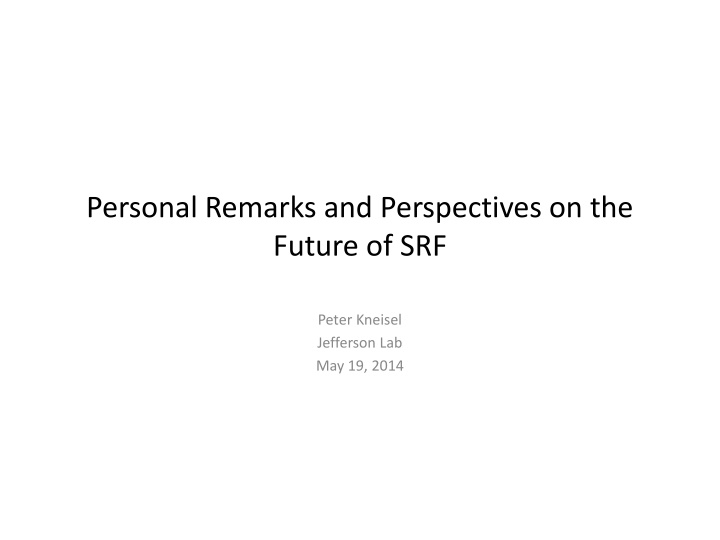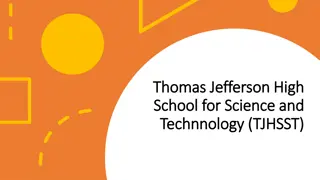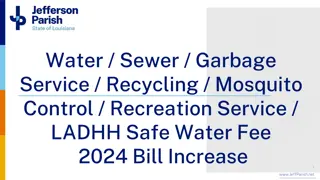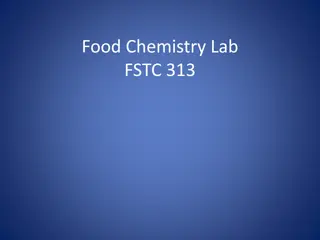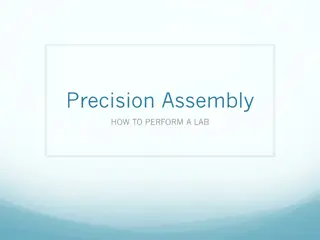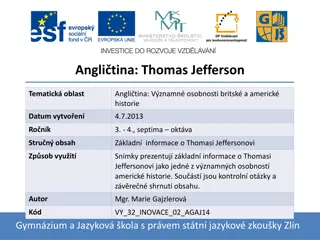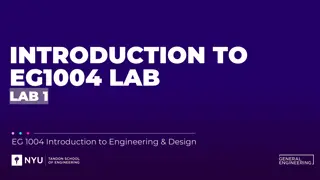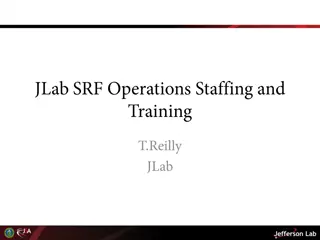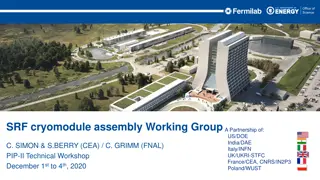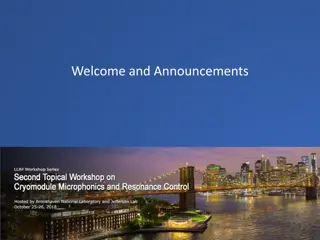Insights on the Future of SRF Technology by Peter Kneisel at Jefferson Lab
Peter Kneisel reflects on the past and present advancements in superconducting radiofrequency (SRF) technology, debunking the notion that Niobium has reached its limit. He discusses ongoing improvements in SRF cavities, surface treatments, and fabrication techniques, highlighting the need for cost reduction in large projects like the ILC. Kneisel also explores the potential of alternative superconducting materials with higher critical fields and Q-values for future applications.
Download Presentation

Please find below an Image/Link to download the presentation.
The content on the website is provided AS IS for your information and personal use only. It may not be sold, licensed, or shared on other websites without obtaining consent from the author.If you encounter any issues during the download, it is possible that the publisher has removed the file from their server.
You are allowed to download the files provided on this website for personal or commercial use, subject to the condition that they are used lawfully. All files are the property of their respective owners.
The content on the website is provided AS IS for your information and personal use only. It may not be sold, licensed, or shared on other websites without obtaining consent from the author.
E N D
Presentation Transcript
Personal Remarks and Perspectives on the Future of SRF Peter Kneisel Jefferson Lab May 19, 2014
Since I believe that I am much better in talking about the past than predicting the future - my view is clouded by the past 47 years I will start with some remarks about the past As some of you might recall, there was a session at SRF 2009 in Berlin titled Hot Topic Hasan and myself were asked to discuss two subjects Is Niobium at the end of the road? At what front should we do battle? As usual we both had some different views Hasan presented a more optimistic view and gave us his perspective for the next 25-35 years- of possible projects, which would require much higher gradients as presently achieved with Nb. My own view was a little bit more subdued and concentrated more on shorter term needs. Both contributions can be found in the SRF2009 proceedings Let s see what the last 5 years in SRF developments have brought us Here are some slides from my 2009 remarks
Is Nb at the end of the road? Absolutely not Critical field has been reached in a few cases, but: Technology far away from routinely reaching the limit, especially in multi-cell cavities Surface treatment (EP) and fabrication (EBW) are less than reproducible: still large spread in data FE is still the major problem For cw application Q-values ( residual resistance) need to be improved and reproducibly achieved The fact, that work is going on to improve the surface - ALD, EP of various flavors, fabrication (seamless, LG,EBW), furnace treatments, baking in argon, Nb thin films.. speaks for itself Major goal for large projects such as e.g. ILC should be reduction of costs
End of the Road? Best 9-cell performance achieved with ingot Nb at DESY[W.Singer et al,PRST 16,012003(2013)] A cryomodule has been assembled from these cavities ( 7 ) and the losses in this module is ~ 50% lower than in standard modules [J. Sekutowicz, TTC meeting 2014]
Obviously there is a tendency to explore other/better superconducting materials, because of lower costs, less sc material (Thin film Nb) cheaper structure (L.Phillips,3rdthin film workshop, Jlab 2008) The argument for doing this is often focussing on higher critical fields (multi-layers) and higher Tc(other sc materials), which implies higher Q- values?? Is this true? At what front should we do battle?
Choices among Superconducting Materials Nb compounds A15 compounds MgB2 Material Nb Tc (K) 9.2 n( cm) 2 Hc(0) [T] 0.2 Hc1(0) [T] 0.17 Hc2(0) [T] 0.4 (0) [nm] 40 NbN 16.2 70 0.23 0.02 15 200 NbTiN 17.5 35 0.03 151 Nb3Sn V3Si Mo3Re MgB2 18 20 0.54 0.05 30 85 17 15 0.43 0.03 3.5 140 40 0.43 0.03 3.5 140
Other Superconductors Nb3Sn: Most explored alternative material; most successful process: Vapor diffusion Siemens : ~ 110 mT in TE cavity ( X-band) Uni Wuppertal (M.Peiniger, thesis): process improvement, multi cell cavities; Eacc ~ 10 MV/m Uni Wuppertal/SLAC: pulsed Uni Wuppertal/Cornell: HPP Wuppertal/Jlab(G.Mueller et al, Abano Terme): single cell and multi-cell 1.5 GHz cavities,High Q s at lower fields, strong dependence of Q on field, reason for stopping development; development picked up again at Cornell and JLab INFN: co-sputtering and reaction, dipping in liquid tin bath
Multi Layer [A. Gurevich, APL 88 (Jan.2006)] Shown in Fig. 3 is an example of QB0calculated from Eqs. 11 14for bare and 50 nm Nb3Sn clad Nb cavities at 2 K for =2, Rb=20 n, R0=2 n at 2 K, s=0.215, D=3 mm, h=5 kW/m2 K, =10 W/mK, and Q0Nb=1010. In this case a 50 nm Nb3Sn overlayer more than triples Q at low field and increases Bb from 180 mT to 280 mT, while a 100 nm multilayer more than doubles Bb to 340 mT, as shown in Fig. 3. For a 100 nm multilayer, Bb is twice of Bc Nb, but still lower than Bc=540 mT of Nb3Sn. But there are other considerations
Other considerations Residual resistance Field dependence of Q Surface electric fields : field emission Thermal stability: substrate material Frozen-in flux due to e.g. MP Lorentz force detuning: typically 2 Hz/(MV/m)^2 at Eacc ~ 100 MV/m : detuning 20 kHz at Eacc ~ 200 MV/m: detuning 80 kHz at BW of ~ 100 Hz What duty cycle is reasonable? High Power Input couplers, coarse and fine tuners? High Tc : How valid is the claim to operate at 4.2K? Thermal stability, heating,
Film Niobium Several new flavors of deposition are being pursued for several years: ECR High power pulse Magnetron sputtering ( HiPIMS) CVD .. Development and progress is slow Successful cavity demonstration still in future
Final Remark There is plenty of development work necessary for the application of bulk Niobium Most important: reproducibility, cost reduction Alternative materials: Okay to learn more about physics good for PhD s, but questionable to sell these materials for accelerator application in the near future Nb technology development started 1963 and hundreds of mill. of $ have been spent until now
Perspetives for the Future For high gradient application and existing cryomodules: Battling FE is still problem #1 Vulnerable are especially larger assemblies/CM s in situ processing For fabrication/cavity performance: Electron beam welding How to avoid cat eyes / defects in the heat effected zone of equator welds?
Perspetives for the Future(2) High gradients are less in demand nowadays compared to high Q and high currents ( power couplers, HOM loads .. ) solidify procedures for high Q s
Q-Improvements: Doping of Nb N-doping at FNAL [A.Grassellino et al, Supercond.Sci 26(2013),102001 Process courageously adopted for LCLSII First seen at Jlab Dhakal et al[IPAC2012]
Implications for high Q: musts!? Sanitized hardware ( first championed by Curtis Crawford) Magnetically well shielded cryostats Well shielded tunnel Reproducible procedure for large cavities (doping, few micron material removal cleaning) Reproducible clean assembly in production environment Optimized Cooldown conditions (slow vs fast) No quenches due to multipacting barriers No field emission FE loading will reduce Q-values Is rework possible?? Even though the XFEL production by industry is very successful, present yield is ~ 70% after ~200 cavities Development of Industrialization
Perspetives for the Future Alternative materials : Ingot Niobium Has been demonstrated even in module to have lower losses Development of inexpensive cutting need to be done Multi wire cutting exists, but is still expensive for small volume Other superconductors/multi layers: tough, how many of us will see an application?? Alternative shape: Superstructure Superconducting joint Seamless Cavities Alternative injectors Superconducting photo-injector Based on e.g. Pb ( no choke joint) or FZD with choke joint Or high current like for e.g. Berlin ERL, BNL ERL.. It seems to make sense to have a sc injector in an all superconducting accelerator
Some Personal remarks (1) Many thanks to all of the presenters and the attendees to participate in this workshop. I very much appreciate the long travels some of you took to celebrate my retirement. Many thanks also to Jlab and in particular the organizers of this workshop: Bob and Charlie I want to say a few words about my 47 years in SRF I started at the Kernforschungszentrum Karlsruhe in Germany in 1967 and had no clue about microwave technology, cavities and waveguides I had from the start a very good boss Prof. A. Citron and a caring mentor in Juergen Halbritter He arranged my first sabbatical at HEPL in 1973 the Mekka of SRF at the time where I worked with A .Schwettmann , John Turneaure and Yuzo Kojima in a swap arrangement with Claude Lyneis This was also my first visit to Cornell University, following an invitation by M.Tigner I met for the first time Ron Sundelin and Hasan Padamsee and we became close friends when I spent another sabbatical in 1978 at Cornell and later moved for good with my family to the US in 1981 In 1987 I joined CEBAF - as some other colleagues from Cornell did I want to thank Ron that he had enough confidence in my capabilities and asked me to come with him to CEBAF, when he accepted the job of Department Head in SRF
Some personal Remarks (2) In the 27 years of my Jlab employment I nearly always enjoyed going to work There were only a handful of occasions, when I was ready to quit One of those happened recently, when one of my long time supporters I want to call him my friend was removed from Jlab staff, because of an unfortunate occurrence outside the Jlab premises At Jlab, I survived seven department heads and three directors I enjoyed working with my colleagues most of them getting their support, guidance and encouragement With many of them I became friends based on mutual respect this was one of the things my friend Yuzo Kojima tought me about personal relationships I enjoyed the freedom of doing and starting interesting work, encouraged by most of my bosses , which lead to many collaborations outside JLab I am thankful for all these benefits besides having earned a living with SRF for 47 years. Without my colleagues at Jlab at any level this would not have been possible
I am still looking to the occasion, where I could predict, whether a cavity ready for testing will have a good performance Good luck to all my colleagues especially the younger one s to find a way to do this
